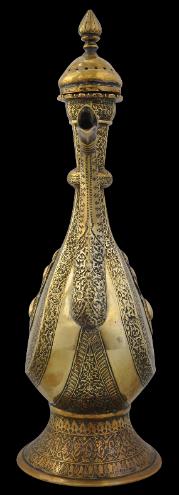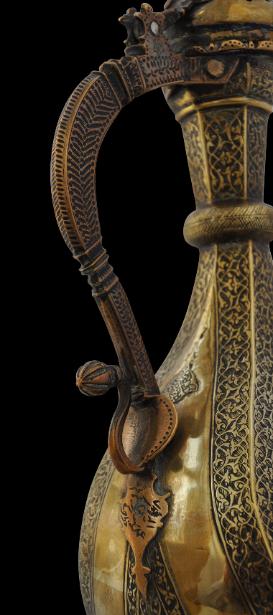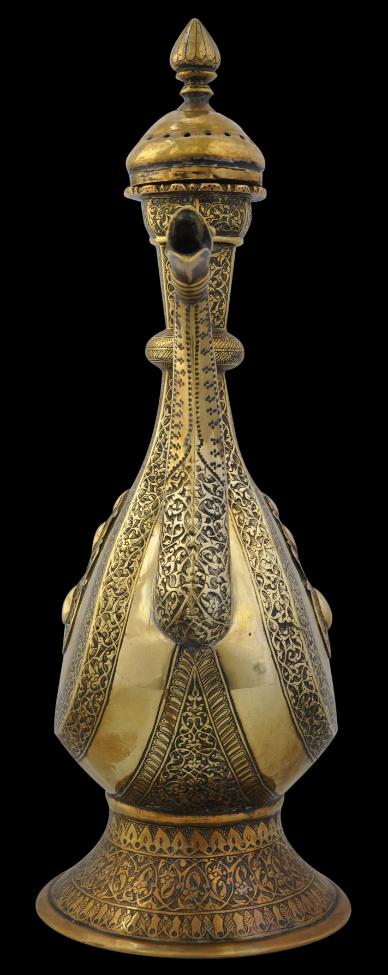
Bukhara Teapot
Bukhara or Kokand
dated 1851
height: 42cm, weight: 1,810g
At more than 40 centimetres (almost 16 inches) in height, this ewer is unusually tall for a Bukharan-style ewer. The chasing and engraving work also is unusually fine. The ewer also shows pleasing signs of use – there is light wear and a lustrous patina.
Such ewers have the appearance of a European coffee pot but in fact, they were not used for coffee, but only ever for tea in Central Asia.
The bod,y of flared, tear-shaped form, is engraved with bands of interlaced scrolling, split palmette motifs and arabesques. Each side has a central raised tear-drop cartouche chiselled with quatrefoil arrangements reminiscent of traditional Timurid designs.
The lid is high and doped and topped with a lotus-bud finial. The ‘S’-shaped handle is of highly zoomorphic form and ends in another bud finial.
The spout is engraved with arabesques and other Islamic motifs but ends with a clearly zoomorphic mouth.
The flared base is finely engraved with scrolling borders against hatched and cross -hatched grounds. The base of the foot is concave and decorated inside with a bud-like protuberance.
The base of the handle has a pendant cartouche that is engraved in Arabic – most probably with the owner’s name – and a year date that corresponds with 1851. More numbers, in Arabic, are engraved on the top of the bridge that connects the lid to the handle.
A similar teapot is illustrated in Kalter & Pavaloi (1997, p.321).
References
Kalter, J. and Pavaloi, M.,
Uzbekistan: Heirs to the Silk Road, Thames & Hudson, 1997.
Provenance
UK art market
Inventory no.: 1697
SOLD












